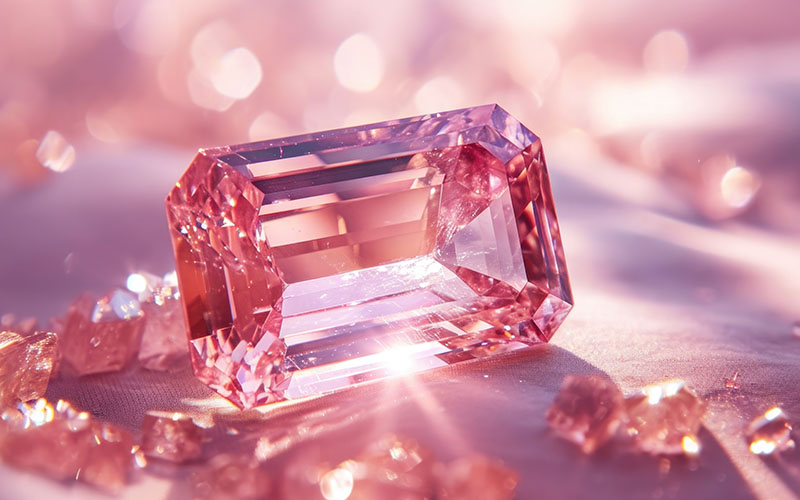Aqua marina is Latin for sea water, and the appropriately descriptive namesake of the beautiful birthstone of March, the aquamarine, which has been used in jewelry dating back as far as 500 B.C.

The ancient Romans thought these translucent blue-green gemstones were hardened seawater, plucked from the waves and frozen into crystal by the magic of Neptune, god of water and sea.
Considered a gift from the mermaids, aquamarines were frequently worn by ancient sailors who believed they offered protection while at sea. To this day, aquamarine jewelry remains popular among seafarers.

Healing and mystical properties
The Romans kept aquamarine in their crystal medical kit as a remedy for throat and digestive issues. During the middle-ages aquamarine was thought to cure poison and reduce anxiety. The practice of crystal healing is quite ancient, dating back more than 6,000 years to the time of the ancient Sumerians of Mesopotamia. Even today, crystal healing proponents believe aquamarine is a powerful meditation tool, often employed to guide an individual toward finding her or his core spirituality.

Among those in the mystical arts, aquamarine was thought to boost intelligence, wisdom, happiness and vitality. It was also believed to protect the wearer against negative gossip.
Properties and care
Like emerald and morganite, aquamarine is a member of the beryl family with hexagonal crystallography. Aquamarine rates 7.5-8.0 on the Mohs hardness scale, making it durable enough for normal wear, but soft enough to accommodate a wide range of cutting shapes and styles. Aquamarine does not require any specialized care. Cleaning can be done with a soft brush and soapy water or standard jewelry cleaner. However, aquamarines with inclusions should not be placed in an ultrasonic cleaner.
Hollow inclusions
In addition to common gemstone inclusions aquamarine, and the other members of the beryl family, are know for having long hollow tubes or channels within. An exceptional example of these inclusions can be seen in the finished version of the Dom Pedro, the world’s largest cut aquamarine gemstone.
The Dom Pedro
Mined in Brazil circa 1980, named after emperors Pedro I and Pedro II, the Dom Pedro Aquamarine’s original rough crystal weighed approximately 100 pounds (45 kg) and measured over 3 feet in length prior to cutting. Berd Munsteiner, innovator of the fantasy cut gemstone, was tasked with planning and cutting this extraordinary specimen.
He combined the original crystal’s inclusions with the reflective properties of shape to create an enchantingly beautiful finished obelisk – weighing 10,363 carats – which must be seen to be believed.
Origins
While Brazil and Columbia are best-known for high quality aquamarines, they occur in many locations with granitic rocks, especially granite pegmatites. They have been found USA, Australia, India, Namibia, Nigeria, Russia, Afghanistan, China, Mozambique, Myanmar, Pakistan, Sri Lanka, Vietnam and Zimbabwe.
Colors
Thanks to Neptune’s magic, aquamarine comes in a variety of ocean-like colors. They range from sea-foam green and teal to bluish-green, medium-blue and dark-blue. The International Gemological Institute grades aquamarine’s color according to hue (warm or coolness of shade), tone (how light or dark the color is) and saturation (the intensity or weakness of color present).

It’s important to note that aquamarines referred to as “Brazilian aquamarine” (bluish-green) or “Madagascar aquamarine” (fine, medium-blue) may not actually be from those countries. These terms may be casually used to refer to a gem’s color, rather than it’s specific origin.
Some greenish colored aquamarines are heat treated. This improves their clarity and changes the color toward light blue, which has become popular. These changes are permanent and difficult to detect, but tend to add value due to the color improvement.
Affordability
Aquamarines are commonly found in large sizes, so they don’t have the incremental increase in value per carat as diamonds and many other gemstones. An aquamarine of 20 carats is essentially worth the same price per carat as a one-carat aquamarine of equal quality. Pricing, then, depends on each stone’s specific clarity and its color hue, tone and saturation.
Of stars and planets
Today aquamarine is associated with the zodiac sign of Pisces and the planet Neptune. It’s the suggested gemstone anniversary gift for the 19th year of marriage. Aquamarine continues to be used by crystal healers to calm and soothe the nerves, and is seen to represent courage, faith and friendship. And, of course, this magical gift from the Mermaids remains a steadfast symbol of protection and good fortune for all who travel the sea.





